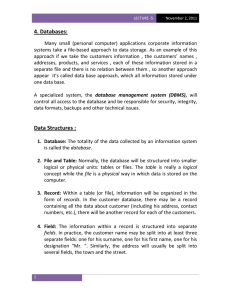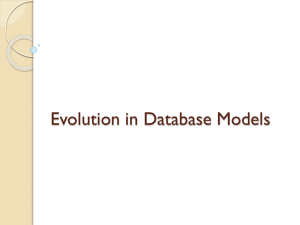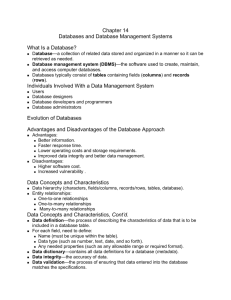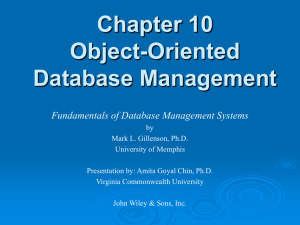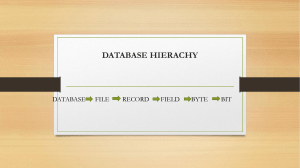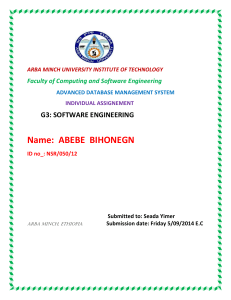part B
advertisement
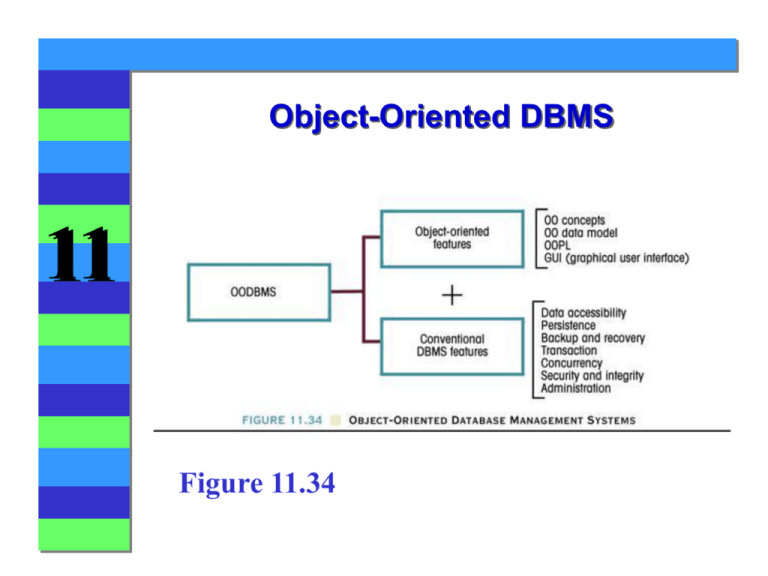
Object-Oriented DBMS 11 Figure 11.34 11 Table 11.4 The Thirteen OODBMS Rules How OO Affects Database Design 11 OO database design approach provides both the data identification and the procedures or data manipulation to be performed. OO database design forces us to think of data and procedures as a self-contained entity. OO design is iterative and incremental in nature. DBA’s role is likely to change with more programming responsibilities. Lack of standards affects OO database design. OODBMS: Advantages and Disadvantages Advantages 11 More semantic information. Support for complex objects. Extensibility of data types. Improved performance with efficient caching. Versioning. Faster development and easy maintenance through inheritance and reusability. Technology-driven product for next generation DBMS. Potential to integrate DBMSs into a single environment. OODBMS: Advantages and Disadvantages Disadvantages 11 Strong opposition from the established players. Lack of theoretical foundation. Retrogressive to the old pointer systems. Lack of standard ad hoc query language. Lack of business data design and management tools. Steep learning curve. Lack of resources. How OO Concepts Have Influenced the Relational Model 11 New Features for Extended Relational (Object/Relational) Model Extensibility of new user-defined (abstract) data types Complex objects Inheritance Procedure calls (rules or triggers) System-generated identifiers (OID surrogates) How OO Concepts Have Influenced the Relational Model 11 Philosophy that guides the relational model’s enhancements: Semantic and object-oriented concepts are necessary to support the new generation of applications. These concepts can and must be added to the relational model. The benefits of the relational model must be preserved to protect the investment in relational technology and to provide downward compatibility. The Next Generation of DBMS The next generation of DBMS is likely to incorporate features borrowed from: 11 Object-oriented database systems Artificial intelligence systems Expert systems Distributed database The Internet
